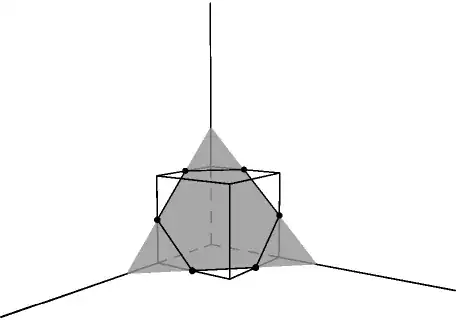(a)Evaluate the integral
$$\int_{C}(y^2-z^2)\:dx+(z^2-x^2)\:dy+(x^2-y^2)\:dz$$
The curve C is the intersection of the boundary surface of the cube $0 ≤ x, y, z ≤ a,$ with the plane $x+y +z = 3a/2$
What i tried
For part (a)I would think of using stokes theorem and i would first calculate $curl F$ which gives $<-2y-2z,2z-2x,-2x-2y>$ while i would calculate the normal n to be $<1,1,1>$ then do a dot product between $curl F$ and $n$ to get $<-4y-4x-4z>$ and substituting $z=3a/2-x-y$. I know that i would need to parametrise this $F$ in order to get the normal $$\iint\!-6a\,dS $$
